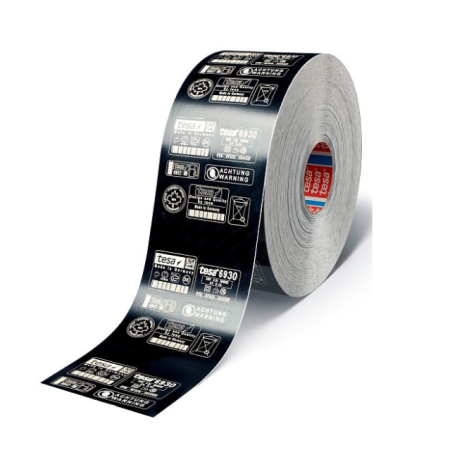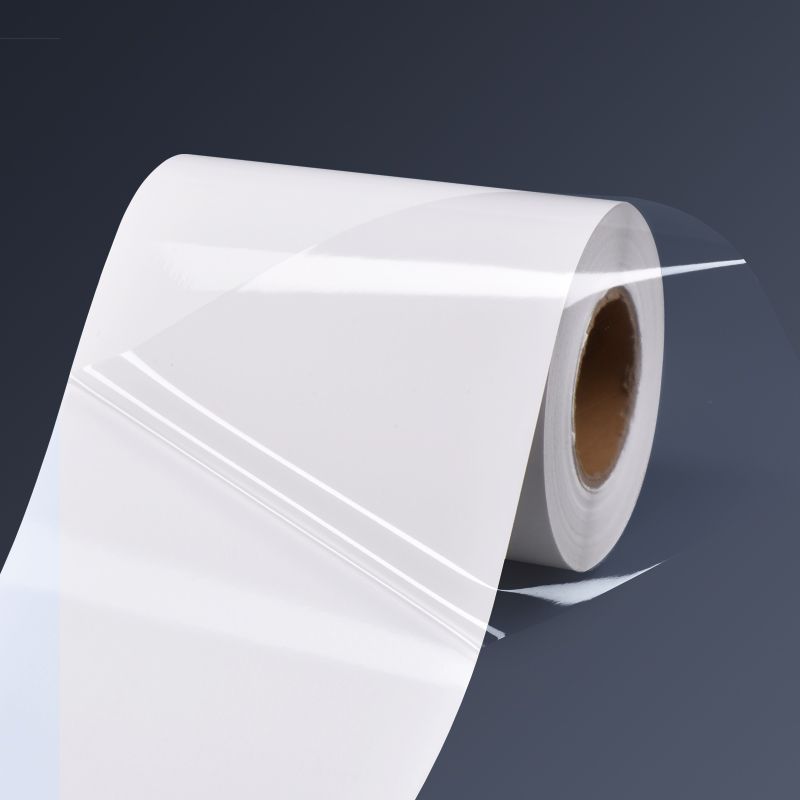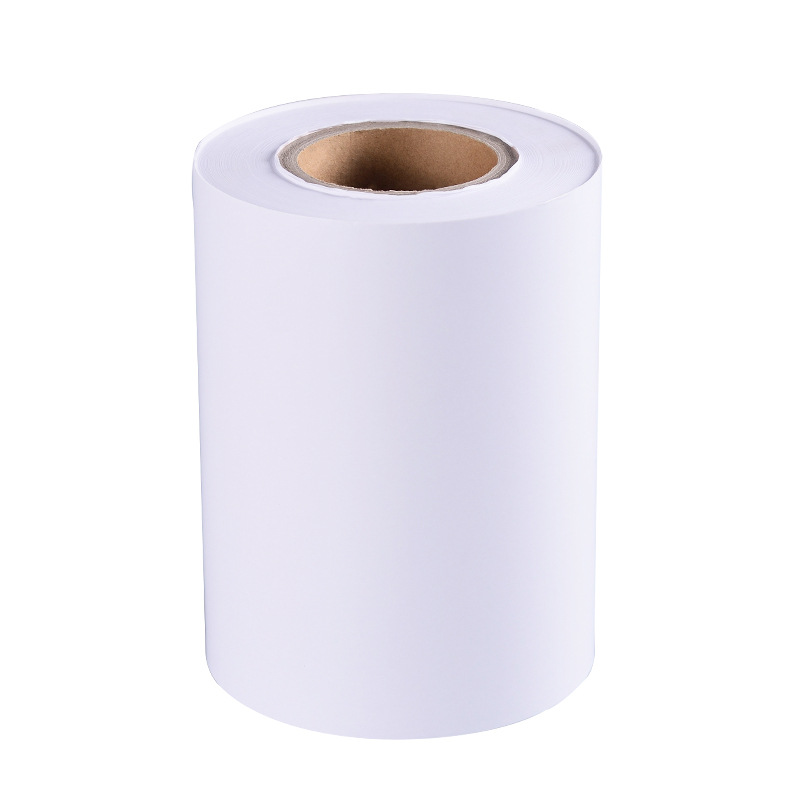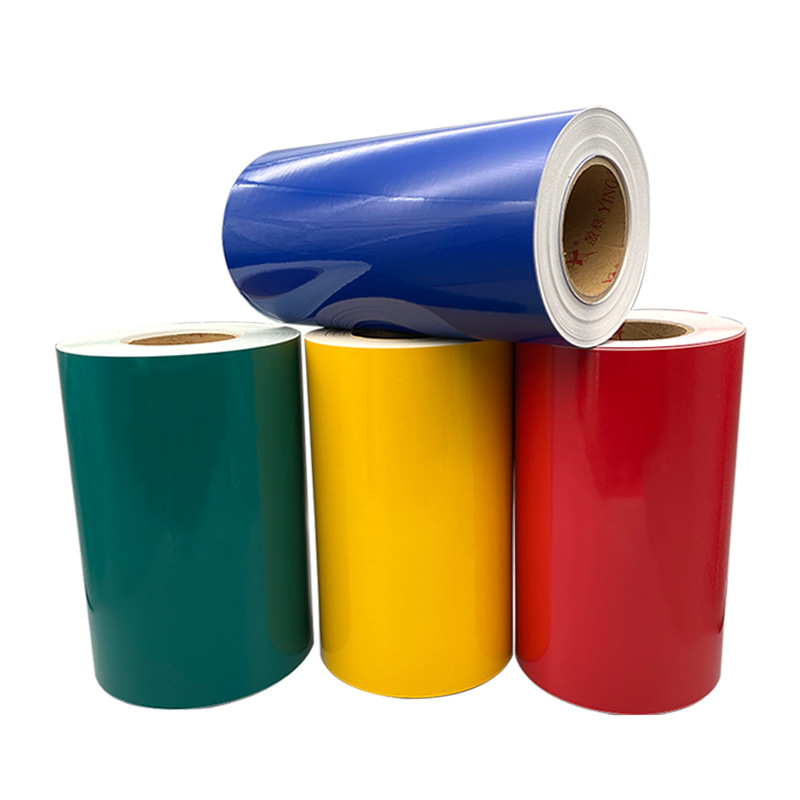Heat shrink film label
Shrink sleeve label is a cylindrical label made of heat shrink film as the substrate, printed and then made. It has the characteristics of easy use and is extremely suitable for irregular containers. Shrink sleeve labels generally require specialized labeling equipment to apply the printed sleeve label onto the container. Firstly, the labeling equipment opens the sealed cylindrical sleeve label, which may sometimes require drilling; Next, cut the label into appropriate sizes and place it on the container; Then use steam, infrared or hot air channels for heat treatment to tightly adhere the label to the surface of the container.
Due to the high transparency of the film itself, the label has a bright color and good luster. However, due to the need for shrinkage during use, there is a disadvantage of pattern deformation, especially for products printed with barcode markings. Strict design and printing quality control must be carried out, otherwise the deformation of the pattern will cause the barcode quality to be unqualified. Shrink wrap labels can be labeled using traditional labeling equipment, which requires the use of adhesive and higher temperatures during the labeling process. During the shrinkage process, due to the stress generated by the adhesive at the overlapping parts of the film, it is better to use hot melt adhesive.
Heat shrink film label material
Shrink wrap labels are usually made of PP film. Due to the low shrinkage rate of PP film, which is generally within 20%, it is more suitable to use hot melt adhesive for labeling. If solvent based adhesives are used, it may cause wrinkles in the PP film. Due to the high shrinkage temperature of PP film, hot air is mainly used for heat treatment, which can achieve higher temperatures than steam heating.
Introduction to heat treatment label barcode
Heat treatment label barcode is a widely used marking method in industries such as metal processing, welding, and casting. It is mainly made of high-temperature resistant special materials, which can tightly adhere to the surface of metal materials and are not easily detached or damaged. The main function of this label barcode is to record the heat treatment process information of metal materials, including key parameters such as heat treatment temperature, time, and process, in order to facilitate quality control and after-sales service during the production process.
Specifically, the application scenarios of heat treatment label barcodes are very extensive. In the production of automotive parts, it can be used to record the production process of components such as axles, crankshafts, gears, etc., ensuring that each component undergoes the correct heat treatment process, thereby improving product quality. In the foundry industry, heat treatment label barcodes are used to record the heat treatment process of castings for the purpose of analyzing and optimizing their performance. In addition, it can also be applied in multiple fields such as steel, aerospace, electronics, etc., helping enterprises achieve quality control and efficiency improvement in the production process.
The advantage of heat treatment label barcodes lies in their ability to achieve automated recording and quick querying, reducing the potential errors and omissions that may occur during manual recording. Meanwhile, due to its high-temperature resistant special material, it can maintain the clarity and readability of barcodes even in high-temperature environments, ensuring the accuracy and completeness of information during the heat treatment process. The application of this labeling method not only improves production efficiency and quality control capabilities, but also helps reduce human errors and losses.
We offer comprehensive technical support, including free professional labeling solutions, advice on label materials and adhesive selection, as well as online/offline assistance from professional software and hardware engineers. Service email: andy@ownlikes.cn. In pre-sales, we leverage our extensive experience in specialty labeling projects to provide clients with the most suitable hardware solutions. Additionally, all our label barcode printers and scanners come with a three-year free warranty, demonstrating our confidence in our products.






This site is protected by reCAPTCHA and the Google Privacy Policy and Terms of Service apply.